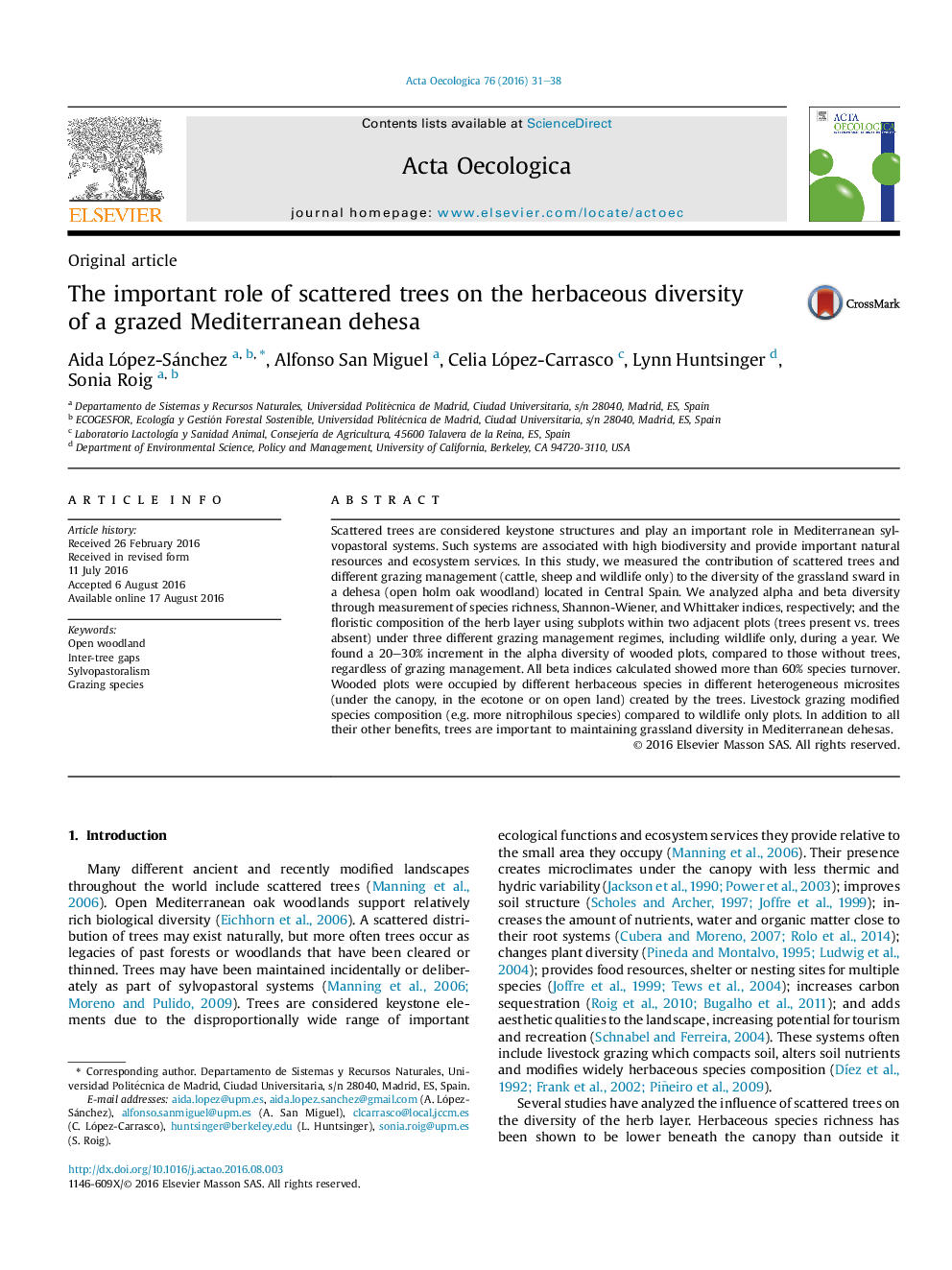| Article ID | Journal | Published Year | Pages | File Type |
|---|---|---|---|---|
| 4380629 | Acta Oecologica | 2016 | 8 Pages |
•The presence of trees increases the herbaceous diversity of the whole system.•Livestock grazing increases the variety of herbaceous species.•Cattle grazing increases species turnover in the herbaceous layer the most.
Scattered trees are considered keystone structures and play an important role in Mediterranean sylvopastoral systems. Such systems are associated with high biodiversity and provide important natural resources and ecosystem services. In this study, we measured the contribution of scattered trees and different grazing management (cattle, sheep and wildlife only) to the diversity of the grassland sward in a dehesa (open holm oak woodland) located in Central Spain. We analyzed alpha and beta diversity through measurement of species richness, Shannon-Wiener, and Whittaker indices, respectively; and the floristic composition of the herb layer using subplots within two adjacent plots (trees present vs. trees absent) under three different grazing management regimes, including wildlife only, during a year. We found a 20–30% increment in the alpha diversity of wooded plots, compared to those without trees, regardless of grazing management. All beta indices calculated showed more than 60% species turnover. Wooded plots were occupied by different herbaceous species in different heterogeneous microsites (under the canopy, in the ecotone or on open land) created by the trees. Livestock grazing modified species composition (e.g. more nitrophilous species) compared to wildlife only plots. In addition to all their other benefits, trees are important to maintaining grassland diversity in Mediterranean dehesas.
